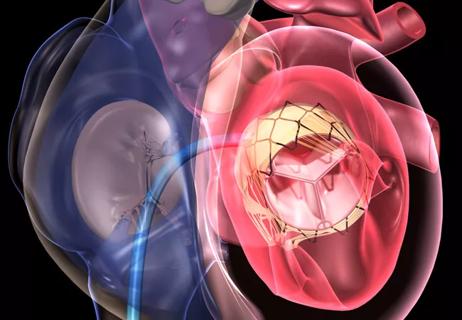Program will support family-centered congenital heart disease care and staff educational opportunities

Over the past decade, pediatric cardiac surgery innovations have been a game changer for improving congenital heart disease (CHD) outcomes. However, despite patients’ increased odds of survival, many remain at risk for developmental delays and disorders.
Advertisement
Cleveland Clinic is a non-profit academic medical center. Advertising on our site helps support our mission. We do not endorse non-Cleveland Clinic products or services. Policy
Several promising neuroprotective strategies have emerged as opportunities to mitigate CHD-related risks. In-hospital neuroprotective care is one such example. In 2024, the American Heart Association published an updated scientific statement on managing neurodevelopmental outcomes for individuals with CHD. The authors refer to in-hospital neuroprotective care and other strategies as “promising,” noting their potential to “modify neurodevelopmental trajectories.”
Optimizing in-hospital neurodevelopmental care for patients with CHD is also at the center of a new Cleveland Clinic Catalyst Grant, an internal award designed to fund a caregiver-inspired idea.
Award recipient Abby Demianczyk, PhD, a pediatric psychologist who specializes in pediatric cardiology, saw a need for inpatient neurodevelopmental services. She co-directs the Section of Neurodevelopment and Psychosocial Wellness within the Department of Pediatric Cardiology alongside Rashmi Rao, MD, a pediatric cardiologist. When Drs. Demianczyk and Rao joined the team about two years ago, they focused initially on building outpatient programs and recently shifted their efforts to inpatient.
“We were looking for straight-forward opportunities that may even be considered ‘easy wins’ that would make a big impact for patients and their families,” explains Dr. Demianczyk. The project’s aims are twofold: in addition to building family-centered developmental care practices, they also hope to empower providers in the pediatric cardiac intensive care unit (PCICU) to deliver specialized neurodevelopment care, an emerging practice area specific to patients with CHD.
Advertisement
The backdrop to all of this is a particularly vulnerable patient population, many of whom have undergone neonatal surgery and require complex cardiac care. “Bedside providers have a lot to balance, and the essential components of care are integral to the hospital admission course,” remarks Dr. Demianczyk
Funding will support resources like clinically approved recliners to facilitate bonding between infants and parents and seats that support developmentally appropriate, nonsupine positioning.
Funding will also provide developmental enrichment and early literacy tools, currently available only through Cleveland Clinic Children’s Child Life Services and by donation only. These items will support patients admitted for cardiac surgery and have prolonged stays.
“We designed this project around family-centered developmental care practices that should ideally begin in the earliest days of infancy and can tailored based on the child, their needs and the environment,” says Dr. Demianczyk. “And also, recognizing that enriching environments matter and are an important aspect of infant care.”
Simultaneously, the grant will fuel bedside provider education and training designed to meet the unique needs of this patient population. Specifically, the group plans to offer simulation training with a neonatal manikin to help prepare staff for scenarios involving neuroprotective care.
This is a setting and a patient population where better-defined care standards are really needed, according to Dr. Demianczyk. “In the context of the PCICU, it will continue to be important to demonstrate that neuroprotective care is necessary, beneficial and doable with cardiac patients.”
Advertisement
The team plans to collect patients’ baseline data at the start of the project, implement their proposed strategies, and measure observational data at the end of the project.
They will measure the increase in the percentage of patients receiving developmental care and staff providing it during hospitalization. They hope that investing in hospital resources will improve skin-to-skin holding, prone positioning and alternative positioning for infants, acknowledging that these are achievable steps based on the research.
“By prioritizing these initiatives, we hope to improve the developmental outcomes for our most vulnerable patients and support families during a critical period in their lives. We are hopeful this will ultimately lead to healthier futures for infants facing the challenges of congenital heart disease,” concludes Dr. Demianczyk.
Advertisement
Advertisement

Experts advise thorough assessment of right ventricle and reinforcement of tricuspid valve

Reproducible technique uses native recipient tissue, avoiding risks of complex baffles

A reliable and reproducible alternative to conventional reimplantation and coronary unroofing

Case provides proof of concept, prevents need for future heart transplant

Pre and post-surgical CEEG in infants undergoing congenital heart surgery offers the potential for minimizing long-term neurodevelopmental injury

Science advisory examines challenges, ethical considerations and future directions

Updated guidance and a call to action

Cleveland Clinic case series demonstrates feasibility and safety